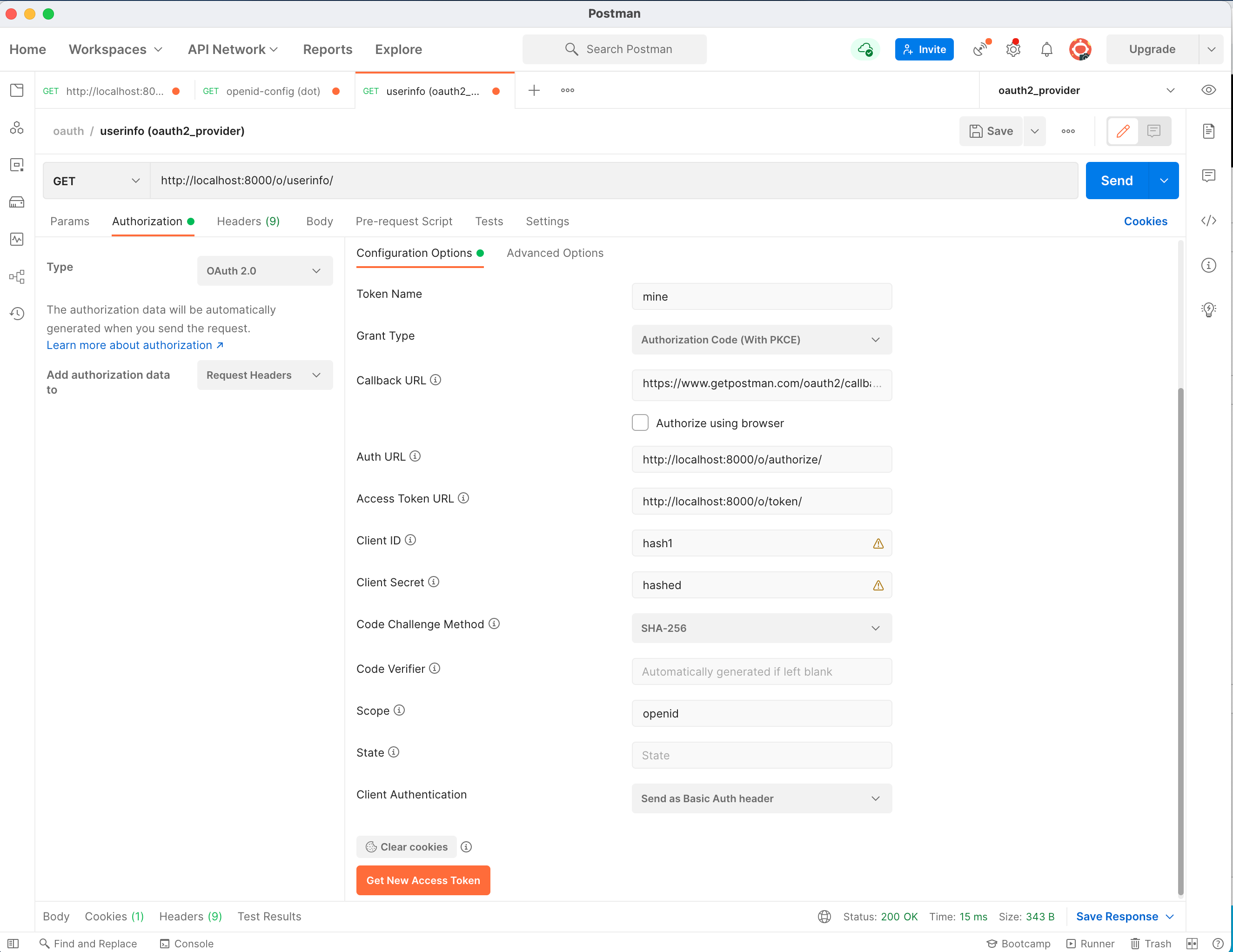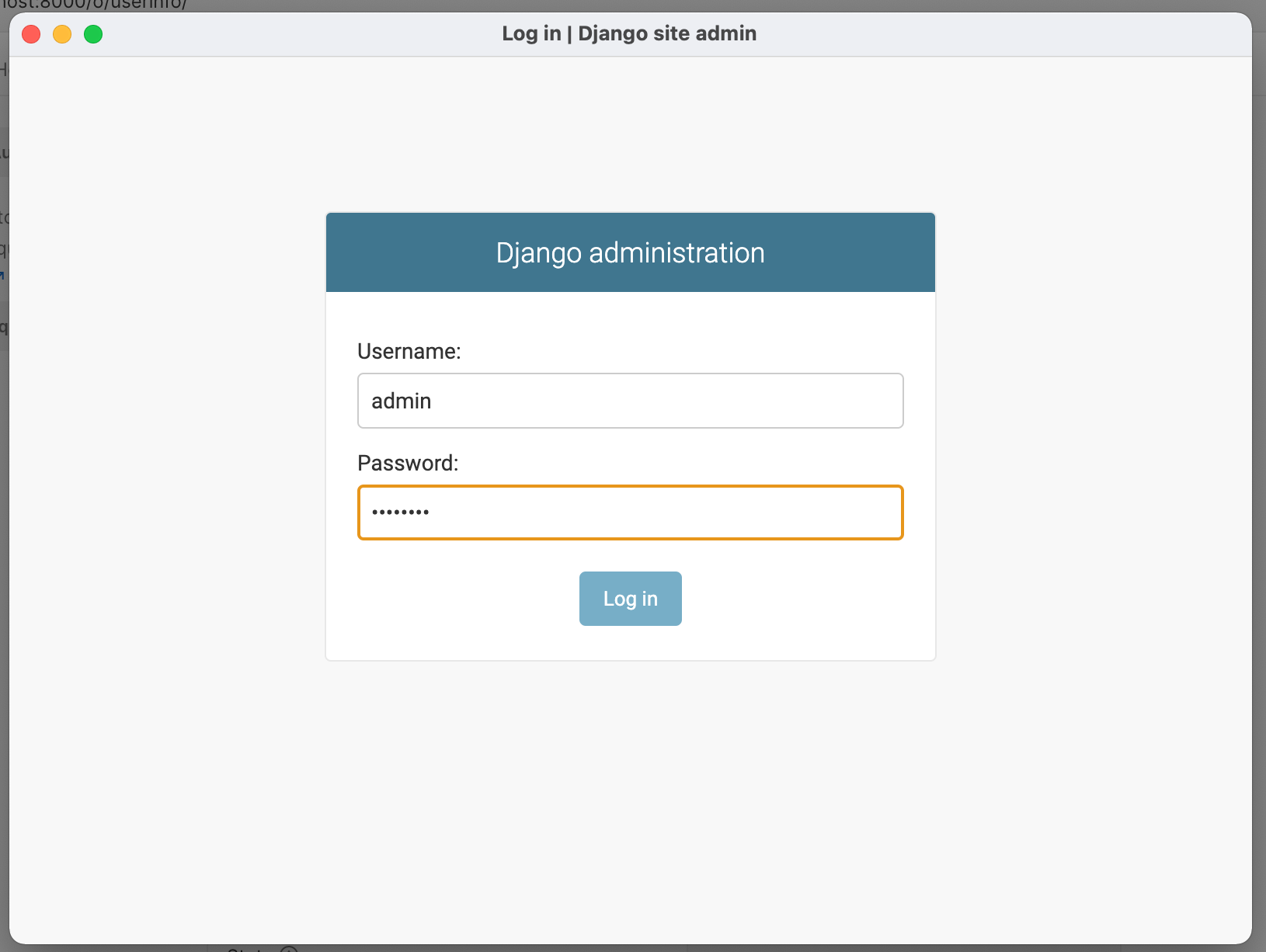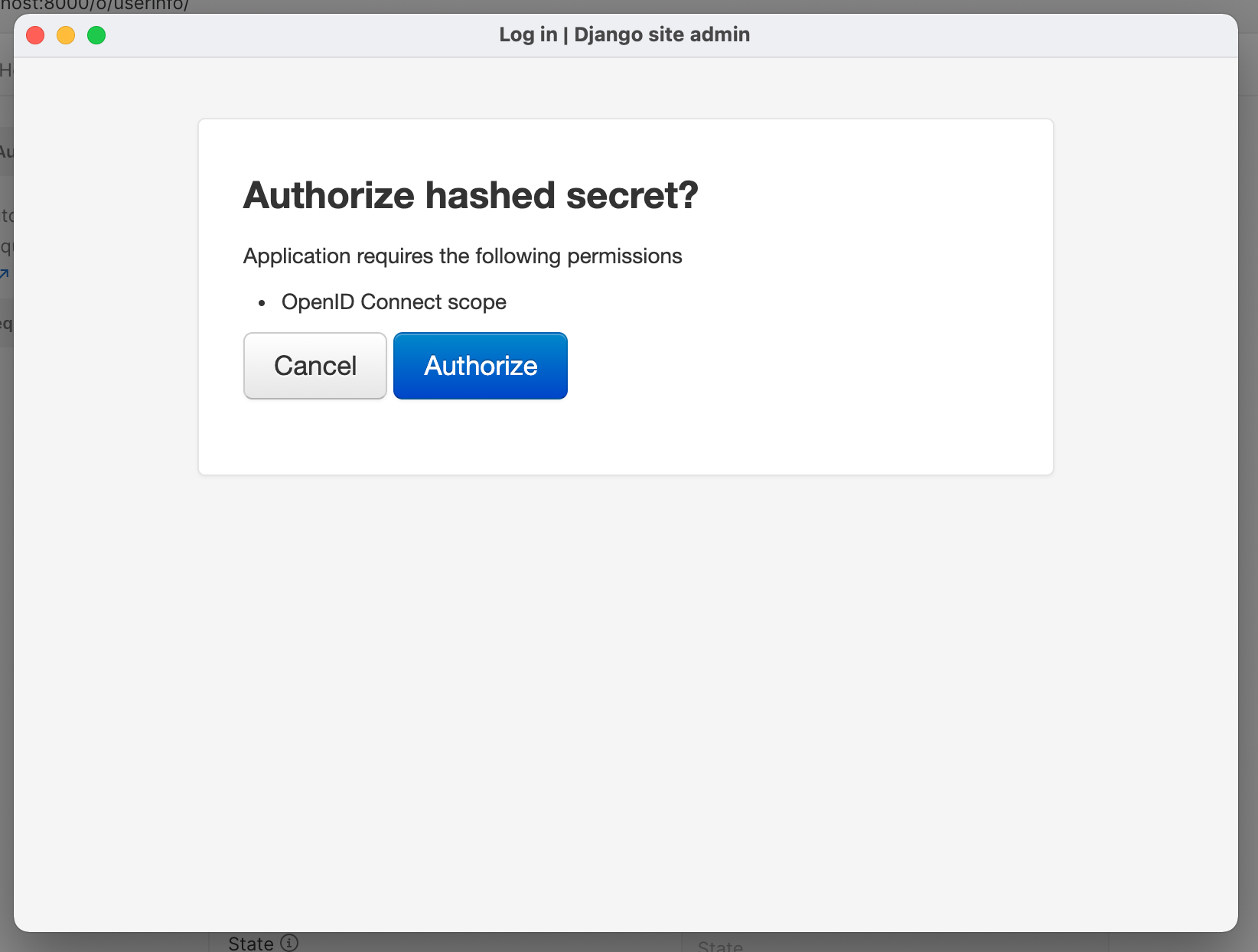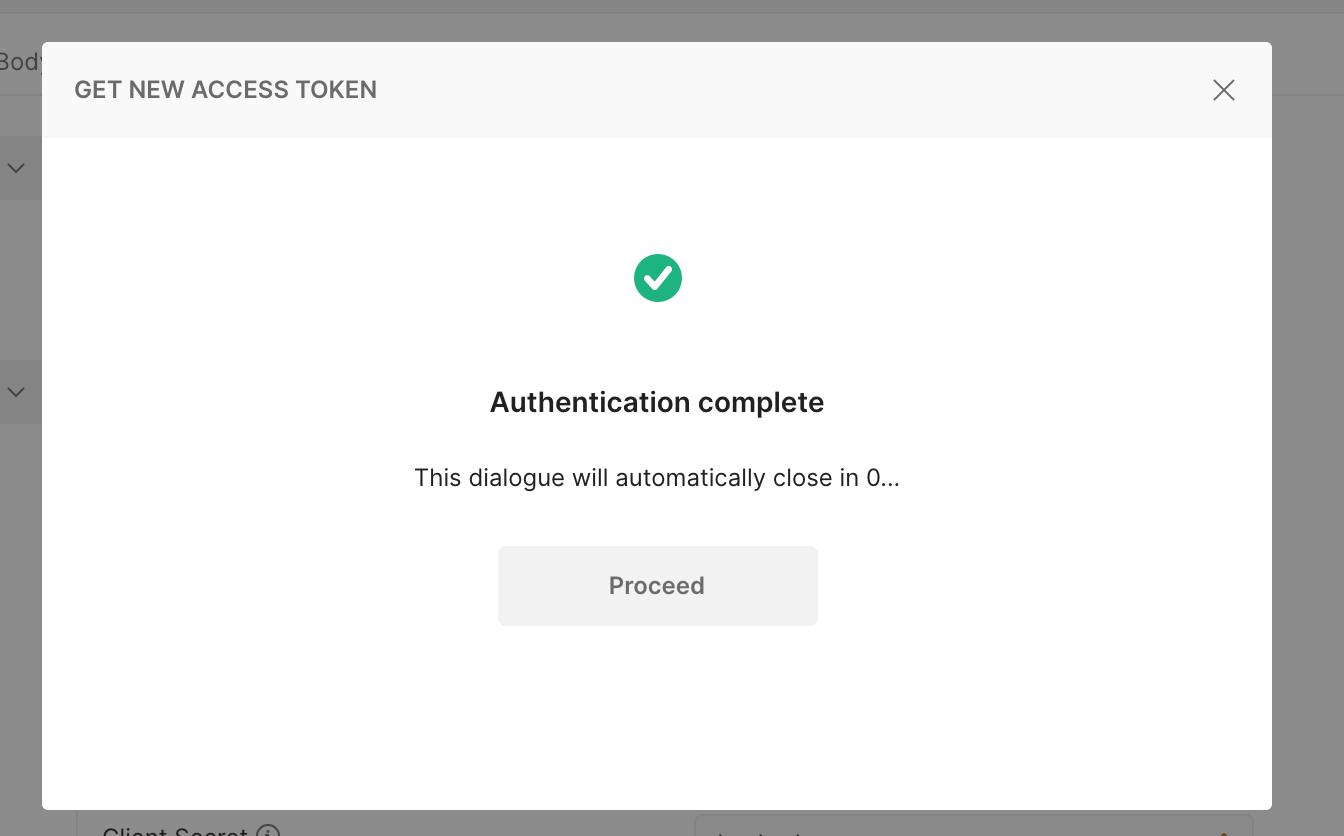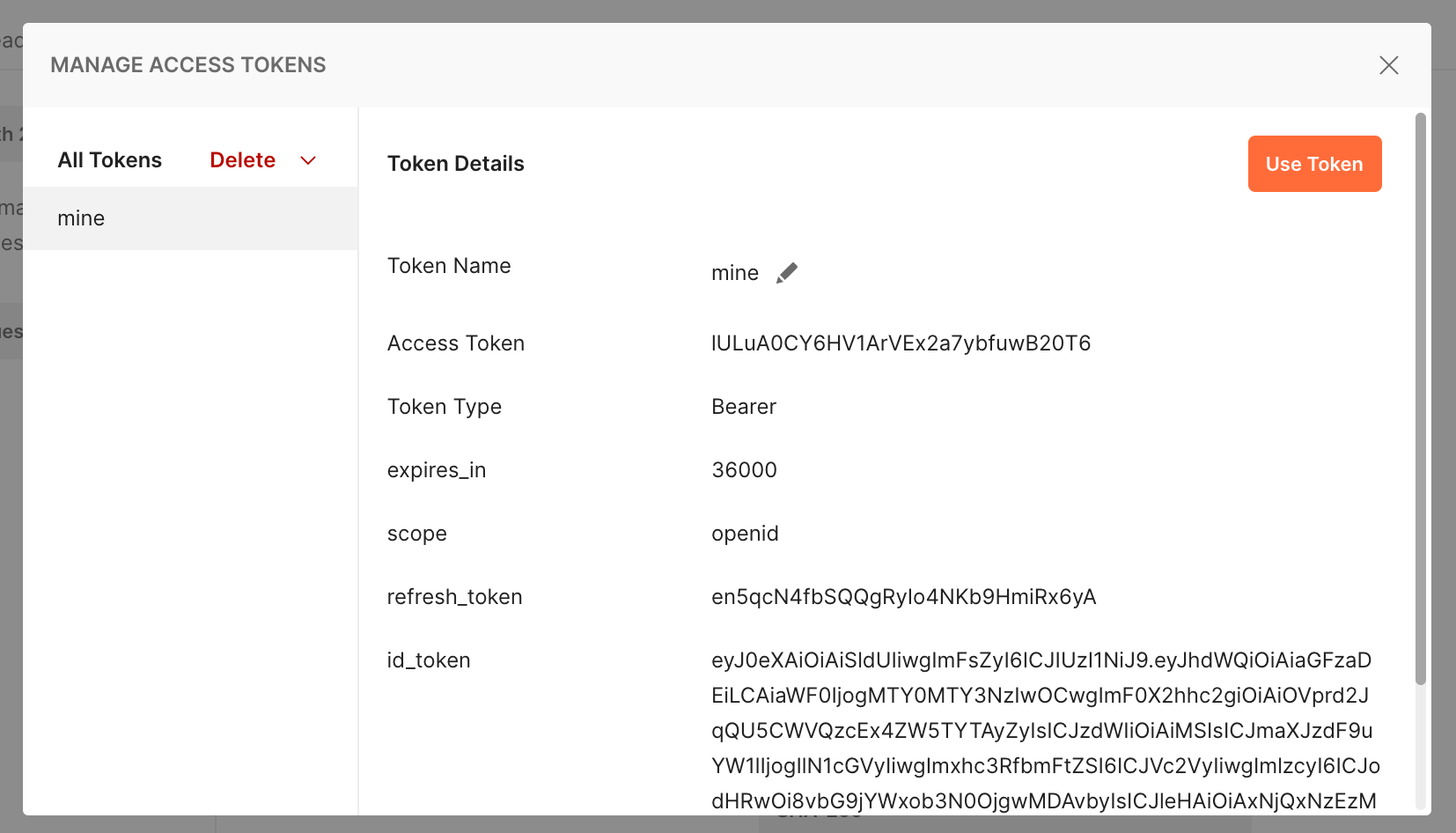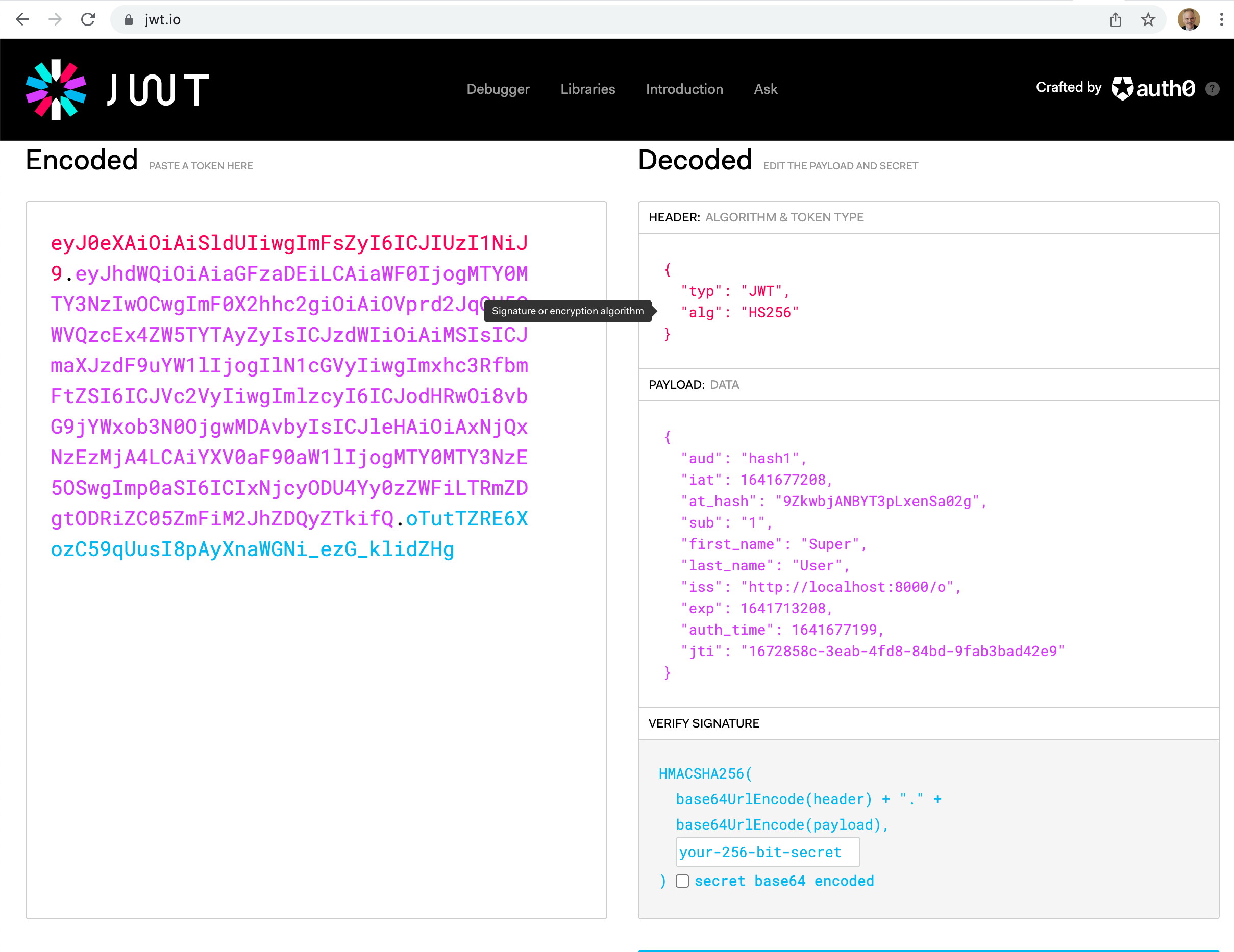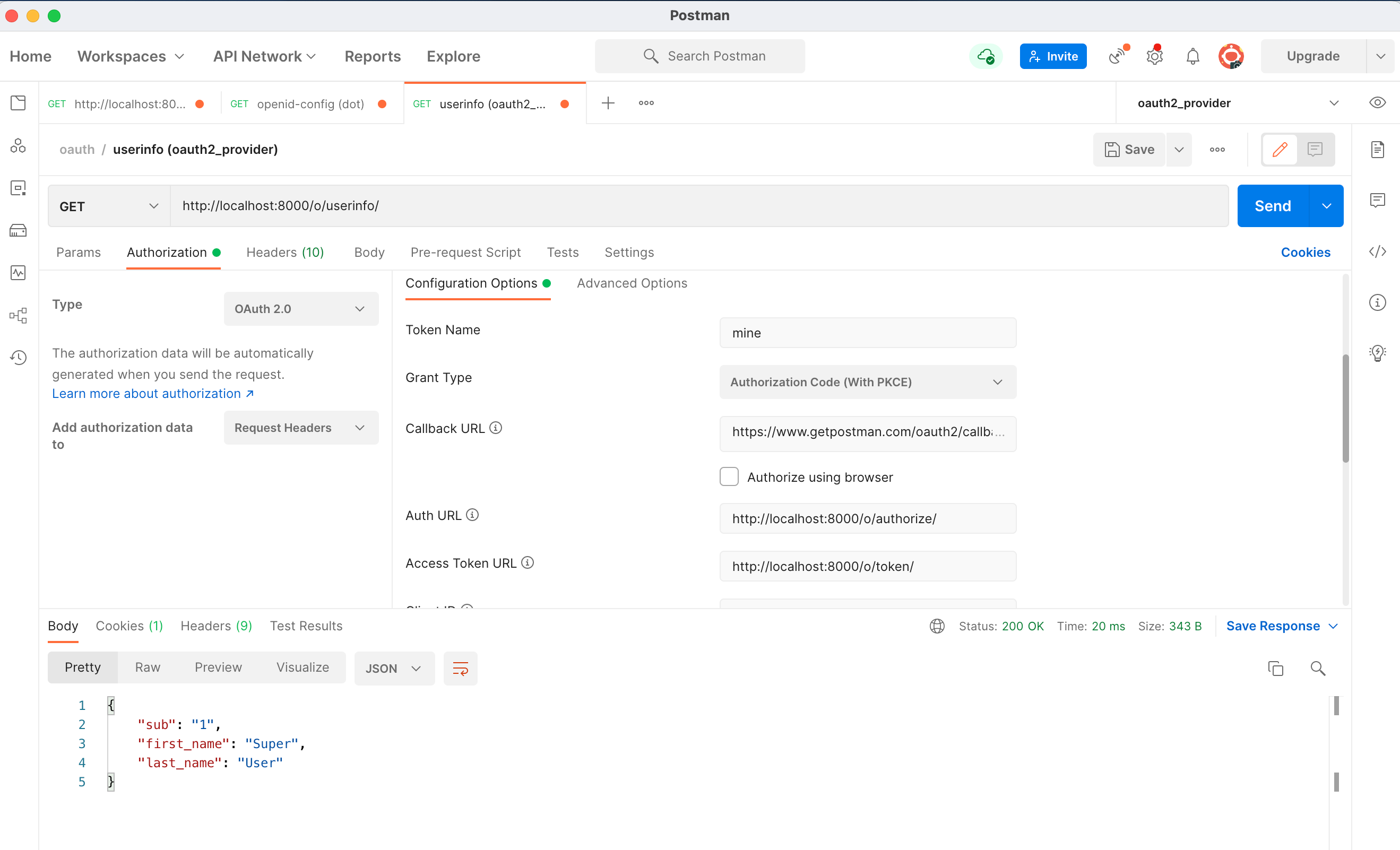Use this repo for testing DOT functionality.
It is based on this tutorial
Simply run tox to configure and run the demo with a preloaded user and OAuth2 application defined.
The user is admin with password admin123.
The application's name is hashed secret, the client_id is hash1 with client_secret of hashed.
(venv) dot-tutorial$ tox
py39 create: /Users/ac45/src/dot-tutorial/venv
py39 installdeps: -rrequirements.txt
py39 develop-inst: /Users/ac45/src/dot-tutorial
py39 installed: asgiref==3.4.1,black==21.12b0,certifi==2021.10.8,cffi==1.15.0,charset-normalizer==2.0.10,click==8.0.3,cryptography==36.0.1,Deprecated==1.2.13,Django==4.0.1,django-cors-headers==3.10.1,django-oauth-toolkit @ file:///Users/ac45/src/django-oauth-toolkit,idna==3.3,jwcrypto==1.0,mypy-extensions==0.4.3,oauthlib==3.1.1,pathspec==0.9.0,platformdirs==2.4.1,pycparser==2.21,PyYAML==6.0,requests==2.27.1,sqlparse==0.4.2,tomli==1.2.3,typing_extensions==4.0.1,-e git+ssh://git@github.com/n2ygk/dot-tutorial.git@8686c493c1003584634373818b9cd2e806ae7b72#egg=UNKNOWN,urllib3==1.26.8,wrapt==1.13.3
py39 run-test-pre: PYTHONHASHSEED='1698771071'
py39 run-test: commands[0] | ./manage.py migrate
Operations to perform:
Apply all migrations: admin, auth, contenttypes, oauth2_provider, sessions
Running migrations:
Applying contenttypes.0001_initial... OK
Applying auth.0001_initial... OK
Applying admin.0001_initial... OK
Applying admin.0002_logentry_remove_auto_add... OK
Applying admin.0003_logentry_add_action_flag_choices... OK
Applying contenttypes.0002_remove_content_type_name... OK
Applying auth.0002_alter_permission_name_max_length... OK
Applying auth.0003_alter_user_email_max_length... OK
Applying auth.0004_alter_user_username_opts... OK
Applying auth.0005_alter_user_last_login_null... OK
Applying auth.0006_require_contenttypes_0002... OK
Applying auth.0007_alter_validators_add_error_messages... OK
Applying auth.0008_alter_user_username_max_length... OK
Applying auth.0009_alter_user_last_name_max_length... OK
Applying auth.0010_alter_group_name_max_length... OK
Applying auth.0011_update_proxy_permissions... OK
Applying auth.0012_alter_user_first_name_max_length... OK
Applying oauth2_provider.0001_initial... OK
Applying oauth2_provider.0002_auto_20190406_1805... OK
Applying oauth2_provider.0003_auto_20201211_1314... OK
Applying oauth2_provider.0004_auto_20200902_2022... OK
Applying oauth2_provider.0005_auto_20211222_2352... OK
Applying oauth2_provider.0006_alter_application_client_secret... OK
Applying sessions.0001_initial... OK
py39 run-test: commands[2] | ./manage.py loaddata fixtures/auth.user.yaml fixtures/oauth2_provider.application.yaml
Installed 2 object(s) from 2 fixture(s)
py39 run-test: commands[3] | ./manage.py runserver
Watching for file changes with StatReloader
Performing system checks...
System check identified no issues (0 silenced).
January 08, 2022 - 21:19:56
Django version 4.0.1, using settings 'tutorial.settings'
Starting development server at http://127.0.0.1:8000/
Quit the server with CONTROL-C.
After quitting the demo, you can mess around and restart it with:
dot-tutorial$ source venv/bin/activate
(venv) dot-tutorial$ ./manage.py runserver
Watching for file changes with StatReloader
Performing system checks...
System check identified no issues (0 silenced).
January 08, 2022 - 21:22:18
Django version 4.0.1, using settings 'tutorial.settings'
Starting development server at http://127.0.0.1:8000/
Quit the server with CONTROL-C.
Following is an example of testing OIDC Authorization Code flow to login with this demo setup and then interrogate the Userinfo endpoint.
It uses Postman, the Swiss Army Knife of the Internet.
(venv) dot-tutorial$ ./manage.py runserver
See https://devcenter.heroku.com/articles/getting-started-with-python and then tweak a few files:
- Procfile
- app.json
- release-tasks.sh
- requirements.txt
The basic heroku CLI commands used are:
heroku apps:create
heroku apps:rename dot-tutorial
git push heroku main
heroku config:set DJANGO_DEBUG=false
heroku config:set DOT_PKCE=false
heroku config:set OIDC_RSA_PRIVATE_KEY="`cat oidc.key`"
heroku logs -t
see certification for rough notes on running OIDC certification tests.
